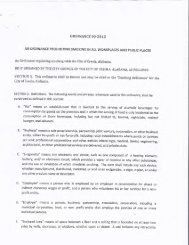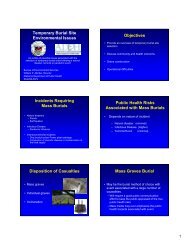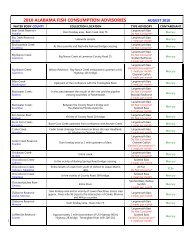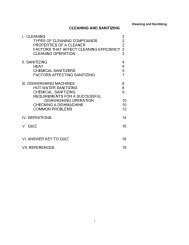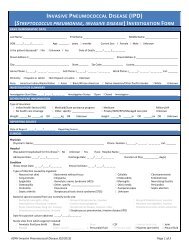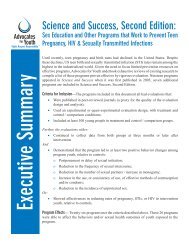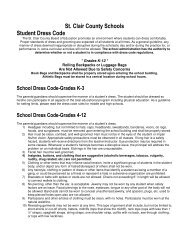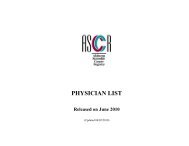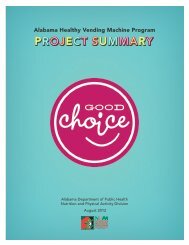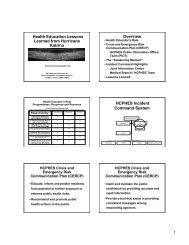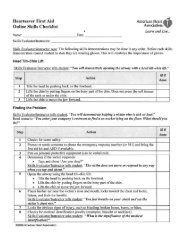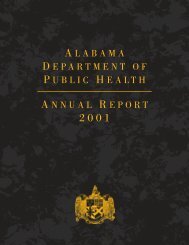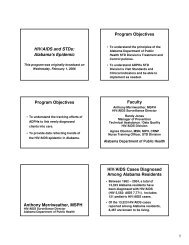2007 - Alabama Department of Public Health
2007 - Alabama Department of Public Health
2007 - Alabama Department of Public Health
You also want an ePaper? Increase the reach of your titles
YUMPU automatically turns print PDFs into web optimized ePapers that Google loves.
ureau <strong>of</strong> health promotion and chronic disease<br />
Steps to a <strong>Health</strong>ier <strong>Alabama</strong><br />
In <strong>2007</strong>, Steps to a <strong>Health</strong>ier <strong>Alabama</strong> completed<br />
the third year <strong>of</strong> a five-year program funded by the<br />
Centers for Disease Control and Prevention and the U.S.<br />
<strong>Department</strong> <strong>of</strong> <strong>Health</strong> and Human Services Steps to a<br />
<strong>Health</strong>ier US initiative.<br />
The program works to reduce the burden <strong>of</strong> diabetes,<br />
obesity, and asthma and their related risk factors <strong>of</strong><br />
poor nutrition, physical inactivity, and tobacco use<br />
and exposure through funding community-based<br />
interventions in two regions <strong>of</strong> the state.<br />
Using the concept that small lifestyle changes over<br />
time can yield lasting health benefits, the Steps Program<br />
is designed to promote efforts that encourage people to<br />
make small changes to reduce the burden <strong>of</strong> these leading<br />
chronic diseases and risk factors. In addition, program<br />
initiatives target policy and system changes that will<br />
make it easier for people to maintain healthy lifestyles.<br />
The Steps River Region program is organized by<br />
the Montgomery Area Community Wellness Coalition<br />
and includes Autauga, Elmore, Lowndes, Macon, and<br />
Montgomery counties. The Steps Southeast <strong>Alabama</strong><br />
Region is led by the Charles Henderson Child <strong>Health</strong><br />
Center and includes Pike and Barbour counties.<br />
Activities in <strong>2007</strong> included:<br />
• Schools completing the School <strong>Health</strong> Index, a selfassessment<br />
and planning tool for healthy schools,<br />
focused on nutrition, physical activity, and asthma<br />
prevention<br />
• Worksites developing wellness programs - including<br />
the <strong>Health</strong>y Steps Challenge and policy changes<br />
related to nutrition, physical activity, and tobacco<br />
• An asthma care coordination pilot project with<br />
the department’s Patient First Program, <strong>Alabama</strong><br />
Medicaid, and physicians in Southeast <strong>Alabama</strong><br />
• Asthma education in schools – Open Airways,<br />
Asthma 101, and an Asthma Safari in Pike County<br />
where young children learned to recognize and<br />
manage their asthma symptoms and triggers<br />
• LifeSkills Training (a personal development and<br />
substance abuse training curriculum) in Barbour<br />
County School System classrooms<br />
• Wellness advocates supporting persons throughout<br />
the River Region to make healthy lifestyle changes<br />
and to access and use health and social services as<br />
needed<br />
• Implementation <strong>of</strong> a VERB Summer Scorecard<br />
program to promote physical activity in youth<br />
throughout the River Region<br />
• Training for physical education teachers using a<br />
new electronic system <strong>of</strong> student physical fitness<br />
testing<br />
• Technical assistance to school systems developing<br />
and implementing local wellness policies<br />
• A summer workshop conducted by faculty at<br />
Auburn University Montgomery for classroom<br />
teachers, physical education teachers, and student<br />
26



